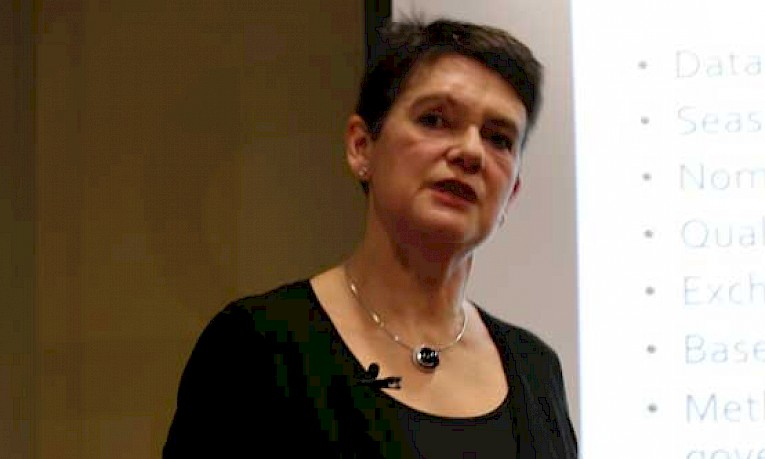The focus of our second evening meeting of the year was the measurement of the economy and welfare, and who better to talk about the subject than Diane Coyle - author of a number of books on the subject of economics including her latest “GDP: A Brief but Affectionate History”.
While GDP estimates have been recreated for many countries going back hundreds of years through history, the concept itself dates back to the 1930s with Nobel Laureate Simon Kuznets’ work on measuring the size of the economy. Diane’s talk brought up to date the key issue of the time - the usefulness of GDP in measuring social progress. Kuznets himself argued that GDP was a poor measure of welfare, to the extent it included spending on various activities that didn’t raise well-being - from advertising to armaments. In this context, Diane outlined a number of other measures which might prove to be better proxies.

The Genuine Progress Indicator (GPI), for example, attempts to account for environmental costs and “sustainability”, with some incarnations recognising that headline GDP doesn’t distinguish between the depletion of assets (consumption) versus the addition to assets (investment). However, these measures rely on ad hoc judgments - such as what to include or exclude, and the discount rate between current and future generations - and in some cases show little or no progress over the past forty years. The World Bank’s measure of Adjusted or “Genuine” Net Saving is not a dissimilar concept, accounting for education on the one hand and the depletion of capital, natural resources and pollution on the other.
The Human Development Index (HDI), proposed by another Laureate Amartya Sen, attempts to reflect things like access to technology, advances in education and infant mortality. One problem with this, however, is that it tends to move broadly in line with GDP raising questions over whether it is a sufficiently different indicator. Diane also considered measures of happiness, which again correlate well with income growth (though not income levels).
While all alternatives to GDP have their drawbacks, Diane’s favoured welfare measure relies on a “dashboard” approach - selecting what indicators are important to the users of the indices themselves. For example, should one prioritise income and education then the US and UK would top world league tables. Alternatively, prioritising environment, work/life balance and life satisfaction would favour Scandinavian countries. In short, it all depends on what you - the user - want the index to measure.
What about poor old GDP itself - does it still have a place in modern economics? Absolutely, according to Diane. Yes, it too has its shortcomings - including the failure to account for the “informal” economy (house/voluntary work), the difficulty in measuring intangibles (Skype phone calls, for example), and issues in determining activity in the finance and non-market government sectors. But it tells the story of the grand sweep of economic history well. Statistics offices should continue to devote further resources to improving its measurement.
With many thanks to Ashurst once more for hosting the event.


